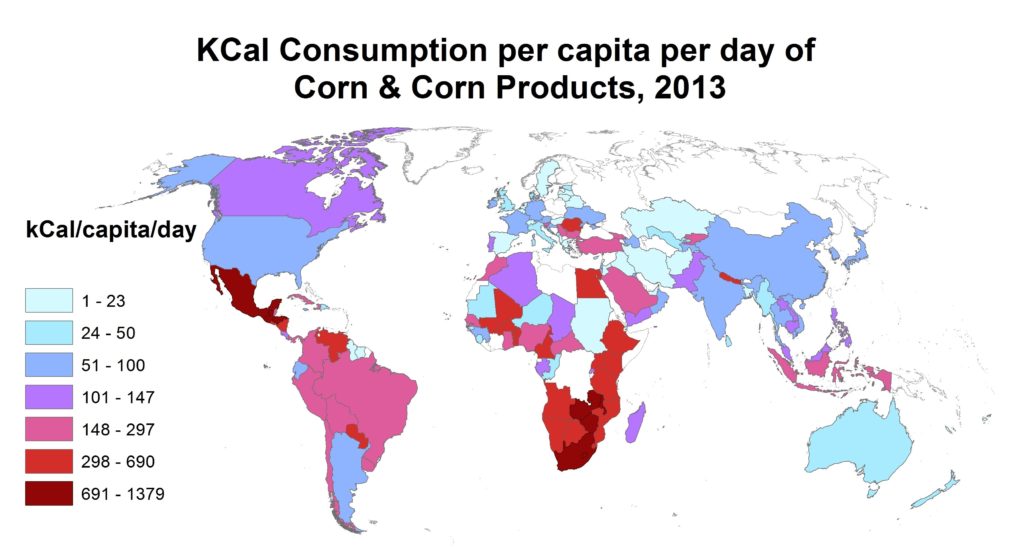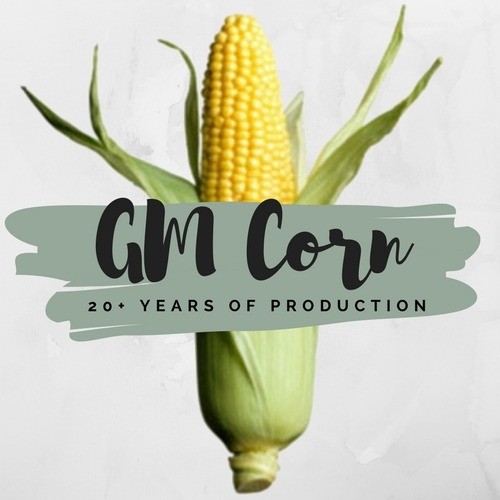A report on 21 years of GM corn data
 The first commercial production of GM corn was in the USA in 1995. In the subsequent 20+ years, the abundance of production data has provided the opportunity to begin to undertake a large meta-analysis of multiple publications. A meta-analysis takes the data and evidence from multiple publications, providing evidence of long-term trends. Such an analysis has been undertaken by 4 Italian academics (Pellergrino et al.), who examined 21 years of genetically modified corn production data.
The first commercial production of GM corn was in the USA in 1995. In the subsequent 20+ years, the abundance of production data has provided the opportunity to begin to undertake a large meta-analysis of multiple publications. A meta-analysis takes the data and evidence from multiple publications, providing evidence of long-term trends. Such an analysis has been undertaken by 4 Italian academics (Pellergrino et al.), who examined 21 years of genetically modified corn production data.
The objective of the meta-analysis was to examine published literature on the impacts of GM corn on yield, the environment and the presence of toxins. With the intent to improve the understanding on both the agronomics of GM corn and health safety impacts on humans.
Metrics of meta-analysis
Pellergrino et al. in their initial search found 6,006 publication, which they ultimately narrowed down by specific criteria, leaving 228 articles. The primary reason for so many publication exclusions of the meta-analysis was the lack of field based research. As a result of requiring experiments from field conditions, the vast majority of the publications included were based on GM corn production in the USA. These studies provided data on yield and quality, impacts on the environment included biomass, targeted and non-target organisms, and insect damaged ears of corn.
Results of the study
Based on the 50 publications on yield, this study found that GM corn variety increases ranging from 5.6% to 24.5%, with an average yield increase of 10%. It appears that the greater the level of insect resistance the GM corn variety had, the higher the yield increase. In which case, GM corn varieties that have resistance to more than one type of insect that can damage the plant is beneficial to yield growth.
Environmental impacts were assessed by examining changes in chemical applications, specifically those used to control weeds and insects. The analysis found a 10.1% reduction in the use of herbicides and a 45.2% reduction in the use of insecticides.
The most significant results were the insect-related toxins in the ears of corn and those related to human health. Insect damage to the ears of corn was reduced by 59.6% through the use of GM corn. A nearly 60% reduction of insect-damaged corn is beneficial to the producers’ bottom line, that is profitability. Additionally, three types of corn toxins were examined, mycotoxins, fumonisins and thricotecens, which GM corn was found to have 29% fewer mycotoxins, 31% fewer fumonisins and 37% fewer thricotecens. The effects of these toxins range from being mildly annoying to humans to being the cause of some types of cancer. Therefore, their reduction in GM corn is beneficial to both producer and consumer health.
What it means
While many organizations, including eNGOs, have baselessly claimed that GMOs cause cancer, evidence now clearly shows that in the case of GM corn, it reduces toxins that potentially cause some types of cancer. This is especially important in the developing countries where corn accounts for the highest percentage of daily caloric intake.[1] Additional human health benefits would be anticipated through the reduction in chemical applications, especially insecticides. In developing countries, insecticides are applied regularly throughout the growing season, with chemical residues ending up on the skin of the applicator, which can lead to pesticide poisoning.
This meta-analysis on 21 years of GM corn production clearly confirms that GM corn:[su_list icon=”icon: angle-double-right” icon_color=”#47907C”]
- increases yield, in this case by an average of 10%;
- reduces chemical application, insecticides dropped by 45%;
- and reduces the presence of carcinogenic toxins by 30%.
[/su_list]
How much longer will eNGOs and naysayers continue to mislead the public by saying there are no benefits to GM crops in the face of evidence such as this?
[1] In 2013, FAO reported that in Malawi corn & corn products accounted for 1125 kcal/capita/day. The world average is 147 kcal/capita/day, of which Malawi and 58 other nations daily consumption of corn are greater than the world average.


